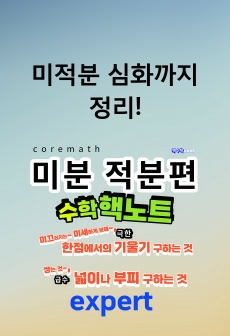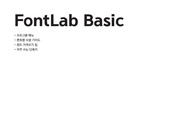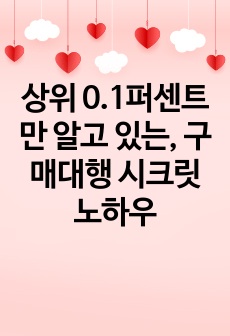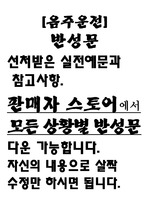按2007年改定教育課程出版中學校《漢文1》所載課文 多文化收容現象研究
* 본 문서는 배포용으로 복사 및 편집이 불가합니다.
서지정보
ㆍ발행기관 : 한국한자한문교육학회
ㆍ수록지정보 : 한국한자한문교육학회 국제학술대회자료집
ㆍ저자명 : LEE Dong Jae
ㆍ저자명 : LEE Dong Jae
영어 초록
Our society is changing rapidly to a multicultural society, but if we disrespect migrant workers, married immigrants and multicultural family children, who came from foreign countries and have been incorporated as our society members, only because of their different skin color, appearance and language and treat their culture with prejudice, such racial discrimination will cause cultural conflicts and undermine the stability of Korea society. In order for them to be the true members of our society, we need to give much consideration not only to national policies but also to social consensus and school education for minimizing their social and psychological conflicts with our culture and reduce social consumption resulting from such conflicts. Culture refers to internal ways of thinking, external behaviors, etc. shared by a specific group through a long process of life experience. Traditional culture is formed and developed collectively by a life community, and reflects their production activities and sentiments, so it has unique characteristics distinguished from the culture of other groups. Traditional culture defines the order and sentiment of life in the group members, and gives a sense of belonging to the community so that the members have identity. Multi‐culture originally meant the coexistence of diverse native cultures retained by minority races and people with their originality preserved rather than being integrated into the dominant culture in multi‐racial and multi‐ethnic countries like the U.S. These days, however, it has an expanded meaning, that is, respecting the originality of minority cultures and pursuing the coexistence of such cultures in the native culture of the mainstream society. In the process that a nation develops its culture, it may receive foreign cultures and change its traditional culture. What is important in this process is developing new culture without losing traditional culture. If traditional culture declines and fades away, overwhelmed by powerful foreign culture, it cannot be desirable succession and development of culture. Multicultural education originated from education for understanding the national background and cultural contributions of American immigrants in the late 1920s, and is also related to the term ‘national studies’ for enhancing the self‐identity of minority peoples in the early 1960s. From the late 1960s, the term ‘multiethnic education’ was used to mean that all children should learn various cultures in the U.S., and in the 1970s, the term ‘multicultural education’ began to be used as its meaning today. Banks, a representative scholar in multicultural education, defined multicultural education as “A reform movement for giving peoples from diverse genders, languages, social classes, races and groups equal opportunities for learning,” and Bennett explained it as “an approach to teach and learn based on democratic values and beliefs in order to promote cultural diversity in a culturally diverse society or an independent world.” Moreover, Morrison said that multicultural education is education for preparing students to understand, perceive correctly and respect others from different races, genders, socio‐economic statuses, languages and cultural backgrounds, and ultimately to live, communicate, and act for common goals in multicultural society.In this way, multicultural education is a concept based on diversity and pluralism as well as on democracy, equality, human rights, social justice, etc. Furthermore, targeting not only children from migrant worker, married immigrant and multicultural families with minority culture but also all students from mainstream culture, it aims to help them recognize that our society is now entering into a multiethnic and multicultural society and be able to develop harmonious relations in the multiethnic and multicultural society. In other words, multicultural education is to emphasize and teach that, in the present age of globalization, groups of different culture, race and society should maintain their own native language and culture and, at the same time, coexist with the mainstream culture and make various contributions to the society. Multicultural education can be divided into ‘multicultural education for mutual understanding among cultures,’ ‘education responding culturally,’ ‘cross‐cultural education,’ ‘cultural pluralism of education,’ ‘multicultural education as human experience,’ etc. Moreover, multicultural education has been developed through processes such as multiple culture education, international understanding education, anti‐prejudice education, and globalization education, and may share conceptual denotations with human right education, anti‐war peace education, and ecological environment education. In other words, multicultural education intends to help students understand the diversity of people with various backgrounds in terms of culture, race, gender and social class, have positive attitude and perception toward the diversity, admit cultural differences from the viewpoint of cultural relativism, and acknowledge values in other cultures. It was from the 7th National Curriculum that Korea began to take interest in multicultural education. At that time, people began to recognize the importance of international understanding education and global citizen education and the necessity to understand culture diversity in other countries. In response to these demands, the 7th National Curriculum introduced some contents for international understanding and multicultural understanding mainly in subjects related to foreign languages and social studies. Later the 2007 Revised National Curriculum reflected multicultural education in all the subjects. That is, the Generals of the 2007 Revised National Curriculum suggest multicultural education as one of 35 interdisciplinary themes of learning, and furthermore, direct that it should be reflected in the development of textbooks. The Korean government is executing various multiculturalist policies to cope with transition to multicultural society and resultant problems. That is, as the number of multicultural family children attending elementary and secondary schools is increasing with the expansion of married immigrants and migrant workers and there should be strengthened educational support to them, the Ministry of Education and Human Resources Development made Plans to Provide Educational Support to Multicultural Family Children but most of the contents aim to help foreign workers and married immigrants adjust themselves to racially homogeneous Korean society by learning Korean language and traditional culture. This suggests that while our society is changing rapidly to a multicultural society but multiculturalist policies and multicultural education are still insisting on Koreanization through infusing the myth of homogeneous race and culture and forcing assimilation to Korean national culture. What is more, through its Study on Teaching‐Learning Support for Multicultural Education, Korea Institute of Curriculum and Evaluation suggested the objectives of multicultural education as follows: first, to understand cultural diversity and differences and strengthen cultural identity; second, to develop tolerance of understanding and respective native culture as well as other cultures and the attitude of contributing to the recreation of culture; and third, to promote a sense of community, the qualities of democratic citizen, peaceful settlement of conflicts, cooperative attitude, respect for human rights, and social justice. In order to achieve these goals, in addition, it proposed programs: first, to provide opportunities to experience other cultures; second, to understand the own traditional culture; and third, to promote international understanding. However, these proposals focus on education for multicultural family children, so are not sufficient for giving multicultural education to ordinary students. In multicultural society resulting from globalization, our education should seek mutual understanding and coexistence of different languages and cultures of diverse races and people rather than the transfer of traditional culture based on our homogeneous language and race. Moreover, education in multicultural society should place emphasis more on the majority’s understanding and tolerance of minorities’ race, people, and culture than on assimilation of immigrants from foreign countries to the mainstream society. Accordingly, though already late, Korean people should also admit ‘multiculturalism’ as a basic attribute of the society instead of clinging to the purity of language and people, and receive and respect cultural diversity for the coexistence of multiple cultures in one society or one country. That is, school education should include not only education for multicultural family students to understand our language and culture as the mainstream but also education for the majority of our society to understand and tolerate the cultures of minorities including immigrants from foreign countries, half‐blooded children from them, and North Korean defectors. The fundamental objective of Korean education is “to build up the people’s character under the ideology of Hongikingan (devotion to the benefits of mankind) and to equip individuals with abilities for independent life and qualities as a democratic citizen so that they may be able to lead a noble life and to contribute to the development of democratic state and the realization of the co‐prosperity of mankind.”Co‐prosperity of mankind is impossible without overcoming nationalism, which gives the top priority to the superiority and benefits of my own country. That is,the true co‐prosperity of mankind is possible only when we acknowledge and respect differences in history, culture, religion, language and customs between my people and others. This means that, in order to educate people required in the age of globalization, even the education of traditional culture should concentrate on raising global citizens from the viewpoint of multiculturalism.
참고 자료
없음"한국한자한문교육학회 국제학술대회자료집"의 다른 논문
 “韓․中․日共用漢字800 字”的選定與課題3페이지
“韓․中․日共用漢字800 字”的選定與課題3페이지 韓國漢文文法的形態論敎育論硏究5페이지
韓國漢文文法的形態論敎育論硏究5페이지 現代漢字文化圈의文字使用과漢字의範疇에關한一考5페이지
現代漢字文化圈의文字使用과漢字의範疇에關한一考5페이지 韓國漢文科教育課程3페이지
韓國漢文科教育課程3페이지 韓國教育用漢字字形規範化方案研究3페이지
韓國教育用漢字字形規範化方案研究3페이지 韓國漢文課設計領域統合課程4페이지
韓國漢文課設計領域統合課程4페이지 朝鮮茶山丁若鏞的論語說三條5페이지
朝鮮茶山丁若鏞的論語說三條5페이지 韓國對韓語漢字詞的教育現狀以及對語言教育之視野開闊的探索5페이지
韓國對韓語漢字詞的教育現狀以及對語言教育之視野開闊的探索5페이지 韓國漢文學의 美學的 照明5페이지
韓國漢文學의 美學的 照明5페이지 韓・中 漢字敎學 比較 硏究6페이지
韓・中 漢字敎學 比較 硏究6페이지

























